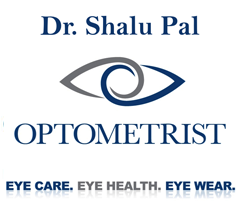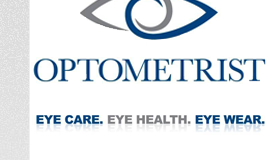Humans are usually a little bit asymmetrical; this is why it is said that there are no two people exactly alike; there are always small differences between our right and left sides. Our eyes are usually fairly similar, but sometimes there is enough difference between them that images we see with one eye are larger than those with the other. This disparity in image size perception from one eye to the other is called aniseikonia.
Aniseikonia (an-eye-seh-cone-ee-yah) is a binocular vision condition, meaning that the disparity between perceived image size in one eye is compared to its size in the other. If we are using only one eye at a time, the image size doesn’t matter. However, we usually go through life with both eyes open, so if the perceived image sizes are different enough, aniseikonia may cause symptoms such as:
- Headaches
- Double Vision
- Dizziness and Vertigo
- Eyestrain and Fatigue
- Poor Depth Perception
- Inability to appreciate 3-D Images
- Reading Difficulties
- Nausea
- Nervousness
- Distorted Vision
- Sensitivity to Light
Aniseikonia is generally thought of as being either static or dynamic. Static aniseikonia means that when an individual looks at an object with one eye at a time, he or she will perceive a difference in size between them, usually expressed as a percentage. For example, if Brian sees an image with his right eye that appears to him to be 5% larger than the one he sees with his left, he is said to be experiencing 5% aniseikonia. His aniseikonia may be treated by either magnifying the image in the left eye by 5%, making the one the right eye sees smaller by 5%, or a combination of the two. Magnifying an image in one eye is equivalent to making it smaller in the other.
Dynamic aniseikonia is a little trickier, but one way to understand it is to consider that each eye usually needs a slightly different lens prescription for sharp, clear vision; when the individual scans a page of printing, the eyes might need to move at slightly different speeds or to rotate slightly more with one eye than with the other. Fusing the two images into one and keeping them there is very important, because when that fusion breaks down, we see double. If left untreated, aniseikonia may cause the brain to adapt, sometimes by suppressing the image in one eye and allowing only the dominant eye to see clearly, in motion or in static gaze.
Causes of Aniseikonia
Aniseikonia may be optically induced, usually when the two eyes have significant differences in refractive error (nearsightedness, farsightedness or astigmatism), a condition known as anisometropia. Peter Shaw, OD, a leading expert in this area, notes that sometimes even small differences in lens power can cause the eyes to see different sized images, especially when the eyes are moving. Shaw believes that most eyeglasses induce aniseikonia even if the lenses are only slightly different. The perceived size difference from one eye to the other can be made worse by a frame that is not appropriate for the prescription, how the frame sits on the face, the amount of tilt the frame front has and how much it wraps around the face, as well as how the lenses are mounted into it.
Sometimes, aniseikonia may exist only in certain meridians; for instance, an eye that is set lower in the face than the other may cause a disparity in how large an image appears, but only in the vertical meridian. Meridional aniseikonia can also be induced by a difference in amounts of astigmatism.
Another complicating factor is that the eyes are almost always tested individually, with minimal testing binocularly. Individually testing each eye makes it easier to find the best lens prescription for each eye, but it says nothing about how the eyes fuse those two images into one or how they work together as a team.
Aniseikonia can also be caused by ocular surgery, such as that for cataract removal in one eye, surgery to repair a torn or partially detached retina, swelling in the macular area, or even just an anatomical difference between the size of each eye. Accidents or other trauma can also result in aniseikonia.
Testing and Treatment
There are several tests to measure aniseikonia. The results of testing will give the eyecare practitioner information about the amount of disparity and the direction. As stated earlier, aniseikonia is expressed as a percentage of size difference from the right to the left eye; an individual with %5 aniseikonia will require a lens prescription that will provide 5% magnification for the left eye, or a 5% minifying lens for the right.
Patients with aniseikonia can usually adapt to and tolerate small amounts of size difference. The threshold for symptoms in most cases is about 3.5%, although some people can tolerate much more, and others cannot tolerate even very small amounts of disparity.
Size lenses provide no optical power but make images larger or smaller; this can be very helpful in determining the amount of compensation needed to relieve symptoms of aniseikonia. A 5% size lens in front of one eye, or a combination of 2.5% larger/smaller as appropriate for each eye should provide both practitioner and patient a sense of how much aniseikonic correction might be needed.
There are several possible treatment options, and each patient will require an individual treatment plan to provide the best solution.
One of the simplest variables to control is the amount of distance between the eye and the lens; as that distance increases, the more different the perceived image size. Contact lenses collapse that distance to nothing. Unless the patient is not a good candidate for contacts, this is one of the first choices for treatment. Contact lenses can also be prescribed for use with spectacles providing other treatment variables in combination with the contacts.
In the past, patients with aniseikonia were sometimes told they had no other option but to wear a patch over one eye, or were prescribed a lens that purposely blurred the vision in one eye, so the size difference would not matter as much. Most patients, understandably, disliked these “solutions,” but now, modern digital lens design and manufacture have revolutionized the way lenses are made; it is now much easier to manipulate variables that induce aniseikonia, such as the lens thickness, where its optical center is located when it is mounted in the frame, and how far away from the front surface of the eye it is. There are several proprietary lens designs available to eyecare practitioners for the treatment of this sometimes frustrating condition.
Advancements in the field of aniseikonia treatment and research about its effects have made it much easier to provide patients with eyewear that minimizes the symptoms of aniseikonia. Spectacles and/or contact lenses that are significantly more comfortable compared to older, standard lens designs are now available.
If you believe you may have aniseikonia or if you experience any of the symptoms listed above, speak to your eyecare practitioner about possible testing and treatment. There is no longer a need for people to wear a patch or sacrifice clarity and depth perception due to aniseikonia.






